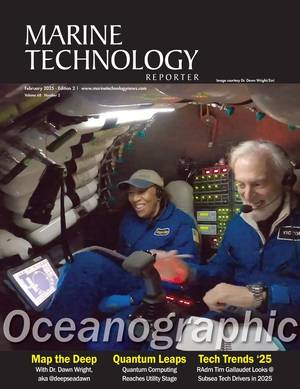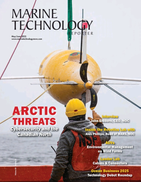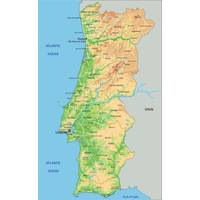
Portugal To Create New Marine Protected Area
."It will provide a fertile nursery and feeding ground for turtles, sharks, marine mammals, sea birds and tunas, expand or restore kelp and coral forests and create a sanctuary for the unique breeding aggregation of torpedo rays."Last year, Portugal created the largest protected area in the North Atlantic, encompassing almost 300,000 sq km around the Azores archipelago, half of it fully-protected.(Reuters
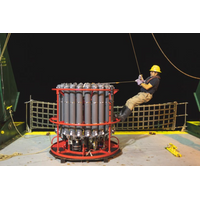
An Unintentional Iron Fertilization Experiment
;There are likely key areas of anthropogenic iron release in South America and Southern Africa that will grow over time, he says. It’s also likely that there were significant emissions during industrialization of the US east coast and throughout western Europe that would have added iron to the North Atlantic. These would have been most intense during the 20th century, and the impacts on the Atlantic resulting from this have probably come and gone.“Our results indicate that a widespread unintentional iron fertilization experiment has been going on for decades as a result of industrial emissions
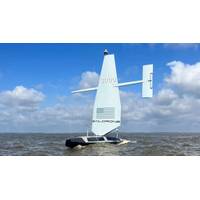
Saildrone, Meta Complete First Unmanned, Autonomous Deep-Water Cable Route Survey in the North Atlantic
In a first-of-its-kind demonstration mission, Saildrone, in partnership with Meta, successfully completed a deep-water cable route survey in the North Atlantic using the Saildrone Surveyor, a 20-meter uncrewed surface vehicle (USV). This project represents a milestone in the evolution of ocean survey technology, proving that autonomous platforms can deliver data quality and performance on par with traditional crewed survey vessels—while dramatically reducing risk and cost.During the 26-day survey conducted in June and July 2024, the Saildrone Surveyor mapped more than 4,500 km of seabed, including
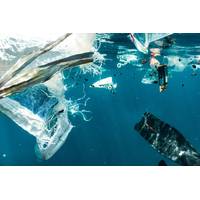
Plymouth Marine Lab: Study Shows Benefits of Cross-Country Plastic Pollution Management
A new study shows cross-country collaboration in tackling marine plastic pollution yields significant economic and environmental returns, up to $36B with a 64% reduction in emitted plastic for countries bordering the North Atlantic.The study focuses specifically on floating macroplastic (larger than 0.5 cm) entering the marine environment via rivers. An estimated 4.8 to 12.7 million metric tons of plastic that enters the global ocean annually, threatening marine ecosystems and biodiversity worldwide.Using data on plastic emitted via rivers with models of the ocean and atmosphere circulation, the

PODCAST: The Adriatic Affair - Finding the 1856 Le Lyonnais Wreck
Shipwrecks Podcast, hosted by Kathy A. Smith, is dedicated to the People & the Science of Maritime Archaeology.The Adriatic Affair: Finding the 1856 Le Lyonnais Wreck“Of the people on the ship, 114 died and only 18 survived. Those that did lived through extraordinary conditions in the North Atlantic. Storms. Dehydration. Starvation. Bitter, freezing temperatures until they were eventually rescued by a passing ship.” - Jennifer SellittiOn November 2, 1856, the French passenger steamship, Le Lyonnais, sank after colliding with the American sailing vessel Adriatic off the coast of
NOC Secures £11M for Early Warning Systems
;7 million. One is an ambitious project exploring the use of novel earth observation platforms, such as airships or high-altitude pseudo-satellites, while the second will unlock the potential of existing international undersea communications cables to become a vast sensor network, starting in the North Atlantic. The third project will use artificial intelligence (AI) and models to push the limits of existing ocean observations and to transform our ability to detect the early warning signs of Subpolar Gyre collapse, including identifying gaps and uncertainty in data. NOC is supporting
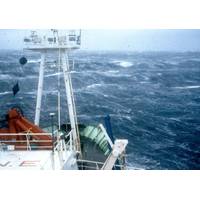
Research Vessel Discovery and "The Night of Monster Waves"
before – or would want to experience again.From mid-afternoon on the 8th to mid-morning on the 9th, wave heights were topping 20 m in height and even reached 29.1 m – the equivalent to a ten-storey building – peaking around midnight.Even for 250 km west of Scotland, out in the North Atlantic, these were abnormal conditions. The storm left its mark on the vessel, 25 scientists and 22 marine crew, who were conducting the Ellett Line hydrographic transect. There was a shattered interior window, broken by the ship’s structure flexing under the immense forces it was under
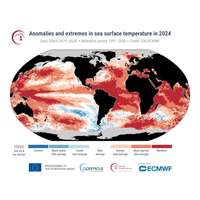
2024 was Hottest Year on Record
for July 2024, have exceeded the 1.5°C level.A new record high for daily global average temperature was reached on 22 July 2024, at 17.16°C.2024 was the warmest year for all continental regions, except Antarctica and Australasia, as well as for sizeable parts of the ocean, particularly the North Atlantic Ocean, the Indian Ocean, and the western Pacific Ocean.Each month from January to June 2024 was warmer than the corresponding month in any previous year on record. Each month from July to December, except August, was each the second warmest, after 2023, for the time of year. August 2024 was tied
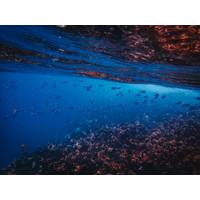
Deep Ocean Heatwaves Associated with Eddies
events that can cause severe damage to marine habitats, such as impacts to coral reefs and species displacement. These events are becoming more frequent due to global warming, with notable occurrences off Australia’s East Coast and Tasmania, as well as the northeast Pacific coast and North Atlantic. Traditionally, they have been tracked via satellite data focusing on surface temperatures. This new research indicates that deep-water heatwaves may be significantly underreported.The research also highlights the influence of ocean currents, in particular eddies, on marine heatwaves, indicating
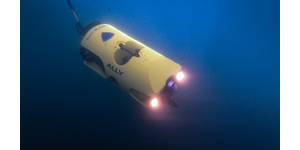
 February 2025
February 2025
